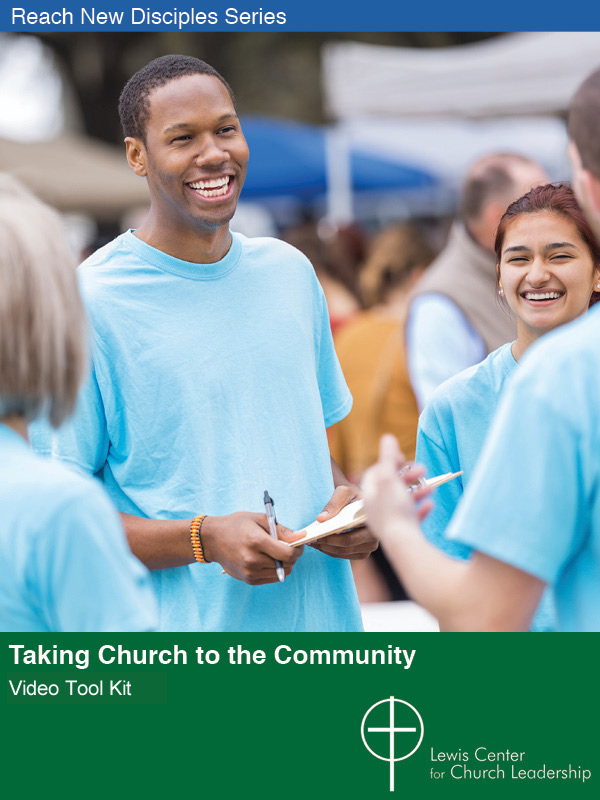Lewis Center Director Doug Powe says many people just don’t like inviting other people to church, in part because faith is so personal and in part because they fear rejection. He provides four clues for inviting in a way that is genuine, specific, honest, and expectant.
Many of us have been in conversations about inviting new people to our congregation and somebody always says, “Everybody I know already goes to church,” which takes them off the hook for inviting new people. Statistically speaking, the range of weekly church attendance is highest for the Silent Generation (51%) and lowest for older millennials (27%). Based on these statistics from the Pew Research Center, even for someone belonging to the Silent Generation, it’s likely that only half the people they know attend church.
Inviting others to anything is a scary proposition. The goal is an invitation that leaves space for others to say yes and that doesn’t paint an overly negative or rosy picture.
The challenge is we really do not like inviting individuals to church. The fear of rejection is one of the main reasons. Understandably most of us do not enjoy rejection at any level. Yet, if we are serious about sharing God’s transforming love, then inviting others to a place where that can happen is important.
Clues for Inviting Others
1. The invitation should be about a genuine connection and not staged. It is best to invite individuals to an event that has bearing on their life or appeals to their interests. It comes across as a genuine connection and not something staged that comes out of left field. I might say, for instance, “I have an extra ticket to hear that new group you like on Friday at 7. I would love for you to come with me.” The connection is authentic because they have an interest in the group. If we translate this to inviting someone to church, then we share with them how the new sermon series on addictions may be helpful as they deal with a child in rehabilitation. The point is the invitation comes across as thoughtful and something that connects with the other person.
2. Be specific. Often, when we do invite, our invitations are very general. If I say to someone, “come to dinner at my house on Sunday,” it leaves out important information, like the time of dinner and where I live. A better dinner invitation is “come over at 5 p.m. on Sunday and my address is 123 Main Street, which I will text you so you can Google directions.” The same principle applies to church. Simply saying, “Why don’t you come to my church on Sunday,” is not as specific as “I would love for you to come to Main Street Congregation at 10 a.m. Our address is 123 Main Street, and I will meet you in the parking lot.” Be specific!
3. Be honest about what we know and do not know. Another reason many of us do not invite is that we are afraid someone may ask us questions to which we do not know the answer, such as, “Why do bad things happen to good people?” It is okay if we do not have all the answers. In many cases others are relieved that we do not know everything. This communicates to others that you are not trying to sell them a bill of goods. We all have been in situations where a salesperson was willing to tell us anything to get us to buy the product. To exaggerate the point, imagine a salesperson saying you need this vacuum cleaner (that works well on shag carpet) when they know you only have hardwood floors in the house. This would leave a bad taste in your mouth. Honesty goes a long way and individuals respect those who are upfront with them.
4. It is important to invite with expectant hope. Do not invite with a defeatist attitude. There are times when we so underplay the invitation it comes across as if we really do not want the other person to come. For instance, a friend saying, “My family reunion is on Saturday. It probably won’t be fun, but you might want to come if you have absolutely nothing else to do.” This is not a compelling invite! But it’s equally important not to go to the opposite extreme and be overly effusive. The goal is an invitation that leaves space for others to say yes without painting an overly negative or rosy picture.
Inviting others to anything is a scary proposition. This is especially true for church because of the personal nature of faith. I believe it is helpful to make a genuine connection, be specific, be honest and avoid shading the picture too bleakly or too rosily. Ultimately, we are inviting others to experience a transforming relationship with God.
Related Resources
- An Opportunity for an Invitation by Sondra Jones
- Evangelism Today Requires New Wineskins by Doug Powe
- Time to Invite by Lovett H. Weems, Jr.







